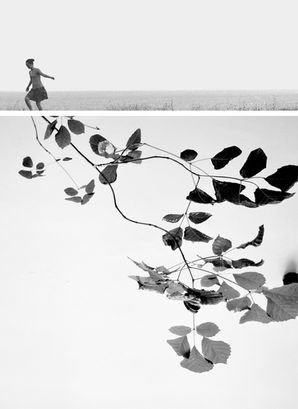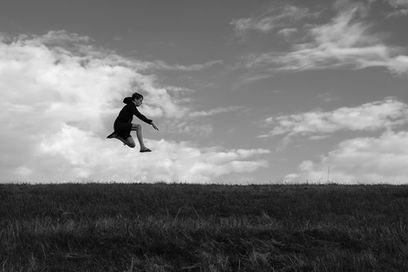
MAKING CONNECTIONS
February 25, 2022
INTERVIEW
PHOTOGRAPHY Vin Sharma
INTERVIEW Karen Ghostlaw Pomarico
For Vin Sharma her photographic journeys evolve around her family. They are the inspiration that opens her eyes to see, excites her mind to think, and motivates her to create. Vin has made significant connections with her family, sharing intimate time together on a family road trip they took in the Summer of 2017. At that time Vin had no idea how this experience would give them the basic tools to manage as a family through a global pandemic.
Vin’s project THE GREAT AMERICAN ROAD TRIP is an intimate family voyage, examining the connections, as well as the disconnections made along the way. We asked Vin to share some of this work, to reflect the inspiration that drives her to create these lovely documentaries about her family.

“The only way I understood how to express this feeling was through photography. This notion came together the instant I became a parent. Suddenly, the idea of family being the inspiration for my identity and my expression was clear. This was the point in my life where documenting this great appreciation became essential. For my own peace of mind and for my own sense of belonging.”
IN CONVERSATION WITH VIN SHARMA
THE PICTORIAL LIST: Vin please tell us about yourself, and what your relationship is with the camera.
VIN SHARMA: The daughter of Indian immigrants, raised in Western Canada, I now call Brooklyn, New York my home. My relationship with the camera is a self taught one that reflects the passage of time and the liminal moments of our lives. The camera is an opportunity to document, engage and experience a vast world of emotions as well as those shared experiences. It is a compulsion that continues to drive me to pick up a camera every day.
TPL: Tell us about your family, and how you have defined your family time. Is there a special time you share together?
VS: We are a family of four, including a ‘covid’ puppy we adopted during the first few months of the pandemic. Our special time has remained the same since we became a family and came together - our evening meals at our kitchen table. They are the hours where we can leave the day behind us and reflect - these are the times we nourish our bodies as well as our souls, simply by being present in the same space.
TPL: Vin, your family has played a major role in your photography projects. Describe their inspiration.
VS: The inspiration comes from my own recollections of childhood and wondering where I belong. Growing up in Canada during the 70’s, I was visibly different. When we spent time in India, I was also seen as an outsider. I have always been somewhere in between these two places. With age, I realized that it did not matter where I ‘thought’ I belonged. I belonged to my family and they belonged to me.
The only way I understood how to express this feeling was through photography.
This notion came together the instant I became a parent. Suddenly, the idea of family being the inspiration for my identity and my expression was clear. This was the point in my life where documenting this great appreciation became essential. For my own peace of mind and for my own sense of belonging.
The inspiration from my family comes from great acceptance of the varied compass of human emotion.
Editor's Note: You can read DOMESTIC WASTELAND here on the website via link below. An authentic portrait of Vin's family and their personal journey through Covid lockdown.
TPL: Your project THE GREAT AMERICAN ROAD TRIP Summer, 2017 spanned the states of Texas, New Mexico, Arizona, Utah. Do you think these times you shared as a family, away from other influences on your road trip: helped you when you were confined to your home
VS: THE GREAT AMERICAN ROAD TRIP definitely helped us during the pandemic. Being locked inside a moving vehicle for hours on end, in the middle of what felt like nowhere, with the same people forced us to accept each other. It’s not like we had anywhere else to go…
That time was something to fall back on as we went into lockdown. Who can say how these last two years would have unfolded without the hours spent in our car.
TPL: You photograph beautiful moments of connections between family, good or maybe not so good interactions and connections. From these visual journeys do you find new ways of thinking and engaging each other?
VS: This is not something I have thought about - perhaps I don’t put much time or thought into finding new ways of engaging. I try to play off the cues of everything around me, of the people I’m photographing. Leaving myself open is perhaps the way I find new ways to engage. That is when I am most comfortable with the camera.
TPL: The written word is important to you, you write with lovely intention, and thoughtful direction. What came first, the chicken or the egg? Did your written word inspire your photography? Or has photography inspired your written word?
VS: Indeed, that is an ongoing question. What came first?
For me, the photography came first, although the written narrative quickly followed. More as a word association game to see what ideas broke through in writing. Now, it seems that writing and photography go hand in hand. The impact of the script is undeniable and a very useful aspect of understanding photography.
In the midst of winter, I found there was, within me, an invincible summer. And that makes me happy. For it says that no matter how hard the world pushes against me, within me, there's something stronger – something better, pushing right back. - Albert Camus

TPL: Are there any artists that have influenced your work? If so, who were they and what was the influence?
VS: Sally Mann’s ‘Immediate Family’ was the first photobook I ever flipped through. Since then, she has been a tremendous influence. Not only through her photography but also in her writing. The beautiful intimacy with which she invited the viewer into her family life remains an inspiration.
Dayanita Singh is another photographer I admire greatly. Her holistic approach to her work as well as her ideas of bringing the museum experience to the viewer have been a constant influence. The idea that photography is meant to be enjoyed by all resonates deeply.
Jhumpa Lahiri is a writer I have always been drawn to. Her ease of expression is thoughtful and honest. As an Indian woman growing up in a very different culture, as I have, Ms. Lahiri’s writing has influenced the way I express my own ideas of identity - an identity which is tied in with my family.
TPL: Documentary photography tells so many stories that as photographers, stay with us. They may even change the way we see or the way we tell stories. A cause with a direct effect. Is there a special photographic moment you can recall that will always remain with you, that changed your view of the world in which you shoot in?
VS: In 1976 on a visit to India, I had my photograph taken in a formal studio. It was the first real moment that created a lasting photographic memory. The photographer asked me to stand in a very specific, rigid manner and I was dressed in traditional North Indian attire, which was far more extravagant than my everyday clothes.
My Grandparent's neighbours, two lovely sisters, had taken me out for the day to have my photograph taken in a local studio. A few days later when they brought the picture back to me, I was shocked. It was the first time I looked at a proper photograph of myself. I could recognize myself, I could see the sense of me, yet I also saw potential. A visual story that had many possibilities. Also one that provided a snapshot of my cultural identity. Is that how the photographer saw me? Is that how the two sisters saw me, a doll to be dressed up and photographed? That image marked the beginning of my curiosity with character perception and how others influence our personal awareness.
TPL: What are any lasting impressions you would like to leave the viewer when viewing your photographs? What is their ‘Take Away’?
VS: I share my story, in the hopes that others can relate. In the hopes that others will understand the experiences that connect us. The ‘take away’ may not be in my hands. This is my effort to reach out, to create invisible threads that bind. To show that in this difficult time, we are not as alone as we may think. Whatever your definition of family and home is, there is always a safe space. We only have to reach out and shape it for ourselves.
Most of all, we have everything to gain by sharing our intimate lives and emotions. Making connections and shared human experiences - these form the foundation of all I have shared and what I hope the viewer will take with them.
TPL: Does the equipment you use help you in achieving your vision in your photography? What camera do you use? Do you have a preferred lens/focal length?
VS: It would be misleading if I said the equipment I use didn’t help my vision. I shoot with the Canon EOS R5 and it gives me a great deal of confidence. Although it does not take photographs on its own, I tend to use the highest aperture setting with a 50mm lens.
TPL: What are some of your goals as an artist or photographer? Where do you hope to see yourself in five years?
VS: My goals have changed in the last two years - what works best for me is the ‘one day at a time’ idea. In terms of photography, I hope to continue exploring the idea of family and home, as well as investigating cultural identity in visual forms. My hopes for five years from now are to continue what I am doing. Observing the passage of time, recognizing the times in between the turning points of our lives as well as visual collaborations with other artists.
Concrete notions of place, time and career achievements seem too far into the unknown at this point in time. For now, I am happy to continue to work, to share and to hopefully be recognized on a more global platform.
TPL: "When I am not out photographing, I (like to)…
VS: When no one else is here in my home, I sit at my piano and play. Simply for myself.
Late at night is when I wield my paintbrushes and listen to the sound of pigment brushing against paper. Drawing, painting, creating - these are my first loves of the visual world.
And of course, there is sleep. I like to sleep."




































